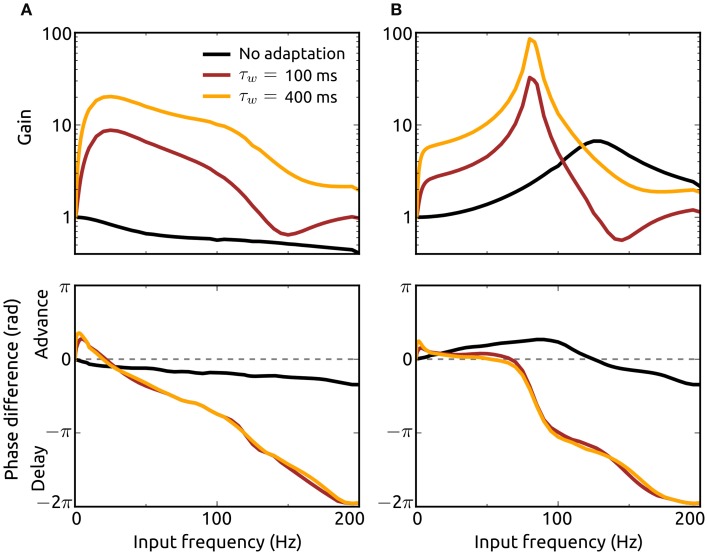Figure 6.
Effects of adaptation on resonance properties of recurrent networks. Gain (top) and phase shift (bottom) of the spike rate rℰ for networks with dominant recurrent excitation [g = 1.05, (A)] and inhibition [g = 1.5, (B)] as a function of the input frequency f. The gain is defined as the quotient of the oscillation amplitude in rℰ for the input with frequency f and the amplitude for the lowest frequency (fmin = 0.5 Hz). Adaptation parameter values are a = b = 0 (black), a = 5 nS, b = 0.05 nA, τw = 100 ms (dark red), and a = 5 nS, b = 0.05 nA, τw = 400 ms (orange). Delay distributions are identically parameterized (pℰd ≡ pℐd) with τr = 1.25 ms and τd = 1.5 ms. The Poisson-input rates rℰext, rℐext each consist of a baseline rate plus a sinusoidal component of small amplitude (1/1000th of the baseline) with frequency f. The baseline of rℰext is chosen to yield a steady-state spike rate r∞ℰ of 50 Hz with constant input rate. The baseline rate of rℐext is chosen as explained in the Methods section.

